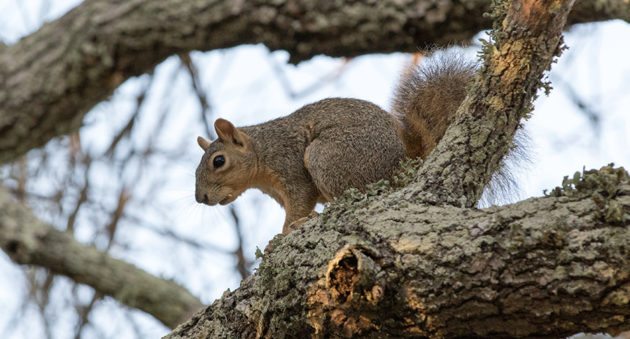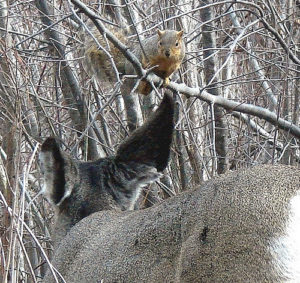
31 Aug SQUIRREL and BIRD HUNTING…

The more we hunt, the better we hunt. As we grow afield, new critters begin to interest us. At some point, we become deer hunters. For me deer hunting came later in live. Hunting squirrels, rabbits, quail, woodcock, doves, and pheasants were my targets. All these critters were common where I lived. After school, I could head out the back door and take the shotgun for a quick walk. Homework would have to wait. Seeing, smelling, stalking, shooting, scouting, and listening are required in all types of hunting.
Sitting in the woods was peaceful, quiet, and required me to focus. To be a successful hunter, you need to focus your senses. Eyesite, smell, hearing, feeling, and processing observations are required. Safety is always a consideration. Once you observe a target, you need to use marksmanship skills. Licenses, limits, rules, and regulations are learned and followed. Being a good sport means doing things legal and honest. Hunting is too much fun to waste time looking over your shoulder. All focus is on the legal hunt, not getting caught breaking the law.
Providing the family with food was also important. I took great pride in contributing to the family food needs. My mother would often prepare my harvest in unique and special ways. The wild game meals tasted better because they were fresh, organic, and wild.
The more time spent afield, the more hunters learn. It is important to know the sounds, smells, and signs that all critters make and display. Our forest ecosystems are all connected. Tuning our senses allows us to become more aware at what is happening. We also observe sign from deer and other critters. This data helps us to locate our blinds and tree stands.
One afternoon, I was perched in a tree stand listening to the squirrels and birds. No deer were moving, and I was just enjoying time alone. The forest was alive with sounds of insects, birds, and every critter that could make noise. Squirrels sounded like elephants chasing each other through the leaves. Every time a herd of squirrels made noise, I thought they were a huge buck. Finally, I decided to take a snooze.
Suddenly, the woods became silent. The squirrels scurried up the trees. No birds were singing, the bugs were silent, and off in the distance I herd footsteps. Soon 5 does came running past. They went right under my tree stand. Oh boy, here comes my moment of truth. Next came 3 small bucks. Two were spikes, and the third was branched on one side. I kept noticing that they were looking back in the direction they came.
The bucks slowly paraded under my tree stand. Many hunters may have been happy with a smaller buck, but I was curious about what was coming next. Patience is an important skill for bow hunters. One perfect shot is all you may get. How many times have deer hunters taken a smaller buck only to see a huge buck in the distance that was not seen. Today, I would take the chance and wait.
As the sun set, I heard rustling in the leaves. The squirrels were nowhere to be seen. I caught a glint of antler in the distance, then another. Using my 10×42 binoculars, I spied at the two bucks. Both were HUGE! My calm manner now went ballistic! These shooter bucks were following the same path as the others.
My bow was at ready and the light was getting low. My amber shooting glasses allowed me to see more brightly for several minutes longer. Both bucks were cautiously working their way in my direction. These 10 pointers were comfortable in their living room. Every critter in the woods were silent in respect.
When looking for deer, you never look for a whole deer. Look for a piece of a deer. Even though I saw the deer, I only saw part of them. Horizontal lines of their back and belly helped me to identify where they were. The bucks would take a few steps, browse, smell the ground, look up and stare around, then continue along their way.
Squirrel hunting is the same. At first you may hear a squirrel, then see a tail flick, or some slight movement. After a slow stalk, some calling, and waiting, you get a shot. Turkey hunting is the same.
Shooting time was short and the forest was getting darker with each minute. Finally, the bucks were in range. At 20 yards I could see them when they moved but not when they were standing still. I was pretty sure where they were but…
Sometimes the best shot you take is the one you don’t. Wounding, or crippling, a critter is not an option any ethical hunter prefers. We pride ourselves on a clean kill.
Sadly, I allowed the deer to pass. I just could not see a clear and unobstructed shot. Maybe I would get another chance if I did not spook them tonight. Several minutes later, I stopped hearing the bucks walking through the dry leaves. It was time to exit the area.
I never saw those 2 bucks again. The stand allowed me to see other bucks, but not the trophy pair I wanted.
Oh well, that’s why it is called hunting.
Montana Grant
For more Montana Grant, hunt with him at www.monatana grantfishing.com.


